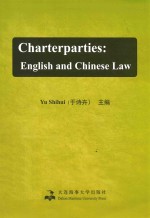

CharterParties:English and Chinese LawPDF电子书下载
- 电子书积分:9 积分如何计算积分?
- 作 者:Yushihui(于诗卉)主编
- 出 版 社:大连:大连海事大学出版社
- 出版年份:2014
- ISBN:9787563230969
- 页数:196 页
Chapter One Introduction of Chartering Shipping 1
Section 1 Types&Characteristics of Charters 1
1 Distinction between chartering and other ways of operating ships 1
1.1 Liner shipping 1
1.2 Tramp shipping 3
2 Comparison of types of charterparties 4
2.1 Voyage charter 4
2.2 Time charter 6
2.3 Demise charter 8
2.4 Other charters 10
Section 2 Shipbrokers&Charter Market 17
1 Function of shipbroker 17
2 Types of shipbroker 18
3 To be a competent broker 18
4 Rights and obligations 21
4.1 Right to commission 21
4.2 Main legal duties 23
4.3 Broker's status under Chinese law 25
5 Charter market 26
5.1 Main charter markets 27
5.2 Market indices 28
5.3 Market report 30
Section 3 Chartering Practice 32
1 Inquiry 32
2 Offer 34
3 Counter-offer 36
4 Firm offer 36
5 Acceptance 37
6 Recap versus charterparty 39
6.1 Recap with"subject to"clause 39
6.2 Where there is conflict between recap & charterparty 40
6.3 Where there is no formal document but only negotiations 41
Section 4 Laws Governing Charterparties 42
1 Characteristic of the legal regime governing charterparties 42
1.1 Compulsory legal regime versus autonomy of parties 42
1.2 Special requirements under Chinese law 43
2 Conclusion of charterparties 44
2.1 Form of contract 44
2.2 Parties to the contract 45
3 Validity of charterparties 47
3.1 English law 47
3.2 Chinese law 48
4 Termination of charterparty 50
4.1 By execution 50
4.2 By mutual agreement 50
4.3 By breach 50
4.4 By frustration or force najeure 55
Chapter Two Voyage Charterparty 61
Section 1 Introductory Clauses 62
1 Discription of the vessel 62
1.1 Vessel's name 63
1.2 Vessel's tonnage 63
1.3 Vessel's class 66
1.4 Flag and nationality 67
1.5 Year of built 68
1.6 Condition of the vessel and its gear 68
2 The voyage 68
2.1 Present position of ship 68
2.2 ETA 69
2.3 Relationship between ETA&LAYCAN 69
3 Ports of loading and discharging 71
3.1 The charterer's obligation to nominate ports or places 71
3.2 Warranties of safety 71
3.3 Owner's right to require a valid nomination 74
3.4 "Or so near thereto as she may safely get" 75
4 Preliminary voyage 76
4.1 To proceed to the loading port with reasonable despatch 77
4.2 Interpellation clause 77
Section 2 Cargo&Freight Clauses 79
1 Cargo clauses 79
1.1 Description of cargo 79
1.2 Amount of cargo 81
2 Freight clauses 82
2.1 Freight rate versus lump sum freight 82
2.2 Dead freight and damages 82
2.3 Conditions to pay the freight 82
2.4 Does freight include the cost of loading and discharging? 83
2.5 Freight claim versus cargo claim 83
Section 3 Loading and Discharging Clauses 84
1 Cost of loading and discharging 84
1.1 Who shall bear the cost of loading and discharging? 84
1.2 Distinction between cost and risk 84
2 Laytime 85
2.1 Calculation of laytime 87
2.2 Commencement of laytime 94
2.3 Suspension of laytime 103
2.4 Completion of laytime 105
3 Demurrage and despatch money 107
3.1 Demurrage 107
3.2 Despatch money 110
Section 4 Other Clauses 111
1 Cesser and lien clause 111
1.1 Purpose 112
1.2 Co-extensive rule 112
2 Bill of Lading clause 113
3 Incorporation clause 114
3.1 Elements to determine whether charterparty terms are incorporated into a bill of lading 115
3.2 Standard charterparty clauses in conflict with the Chinese law 115
4 Law and arbitration clause 119
4.1 Arbitration versus litigation 120
4.2 Validity of an arbitration agreement 121
4.3 Validity of the arbitration clause incorporated into a bill of lading 121
5 Strike Clause 126
5.1 What is a strike? 127
5.2 Options available 128
5.3 Extension of the coverage to after-strike delay 128
6 Tanker voyage charterparties 130
6.1 Description of vessel 130
6.2 Warranty 130
6.3 Freight 131
Chapter Three Time Charterparty 132
Section 1 Description of Vessel 132
1 Cargo capacity,speed and fuel consumption 132
2 "About"/"on average"/"in good weather condition" 135
3 An undertaking applicable at the date of delivery 135
4 Seaworthiness 136
5 Remedies and defences 136
5.1 Remedies 136
5.2 Measure of damages 137
5.3 Defences 137
Section 2 Hire Clauses 141
1 Period of hire 141
1.1 The precision of the time limit 141
1.2 Delivery 143
1.3 Redelivery 145
2 Payment of hire 152
2.1 Payment in cash 153
2.2 Payment without deduction 153
2.3 Remedies of owners 154
3 Off-hire clause 162
3.1 What is off-hire clause? 162
3.2 Elements triggering off-hire 163
3.3 Off-hire cancellation provision 169
3.4 Suspension of hire versus off-hire rate 170
Section 3 Other Clauses 170
1 Identification of carrier 170
2 Employment and indemnity clause 171
2.1 Shipowner's implied right of indemnity 172
2.2 Causation 172
2.3 Orders regarding employment or navigation 173
3 Inter-club agreement 174
4 Safe port 176
5 Trading limits 178
6 Charterer's liability for oil pollution damage 181
6.1 Charterer's direct liability 181
6.2 Charterer's liability by way of recourse 182
Appendix 184
References 192
- 《翦伯赞全集 第10卷 中外历史年表 主编》翦伯赞著 2008
- 《郑杭生主编《社会学概论新修》学习笔记与课后题详解 第4版》郑杭生主编;杨敏,王道勇副主编 2014
- 《社长总编辑 主编 论出版 第4辑》新闻出版署教育培训中心编 2000
- 《专业技术人员创新团队建设读本 主编 靳永慧 甄亚丽 张彦明》靳永慧,甄亚丽,张彦明主编 2012
- 《许国璋主编《英语》单词科学记忆法》李平武主编 1989
- 《柑桔手册 贺善文主编》贺善文主编 1988
- 《北京审计学会主编怎样查帐和调帐》刘大贤,傅磊 1990
- 《许国璋主编 英语自学手册 第3册》石孝殊主编 1985
- 《许国璋主编《英语》自学辅导 上》罗长炎,邢文军编 1986
- 《许国璋主编英语第1册 1979年重印本 练习答案》赵厚宪编 1982
- 《大学计算机实验指导及习题解答》曹成志,宋长龙 2019
- 《大学生心理健康与人生发展》王琳责任编辑;(中国)肖宇 2019
- 《大学英语四级考试全真试题 标准模拟 四级》汪开虎主编 2012
- 《大学英语教学的跨文化交际视角研究与创新发展》许丽云,刘枫,尚利明著 2020
- 《复旦大学新闻学院教授学术丛书 新闻实务随想录》刘海贵 2019
- 《大学英语综合教程 1》王佃春,骆敏主编 2015
- 《大学物理简明教程 下 第2版》施卫主编 2020
- 《大学化学实验》李爱勤,侯学会主编 2016
- 《中国十大出版家》王震,贺越明著 1991
- 《近代民营出版机构的英语函授教育 以“商务、中华、开明”函授学校为个案 1915年-1946年版》丁伟 2017
